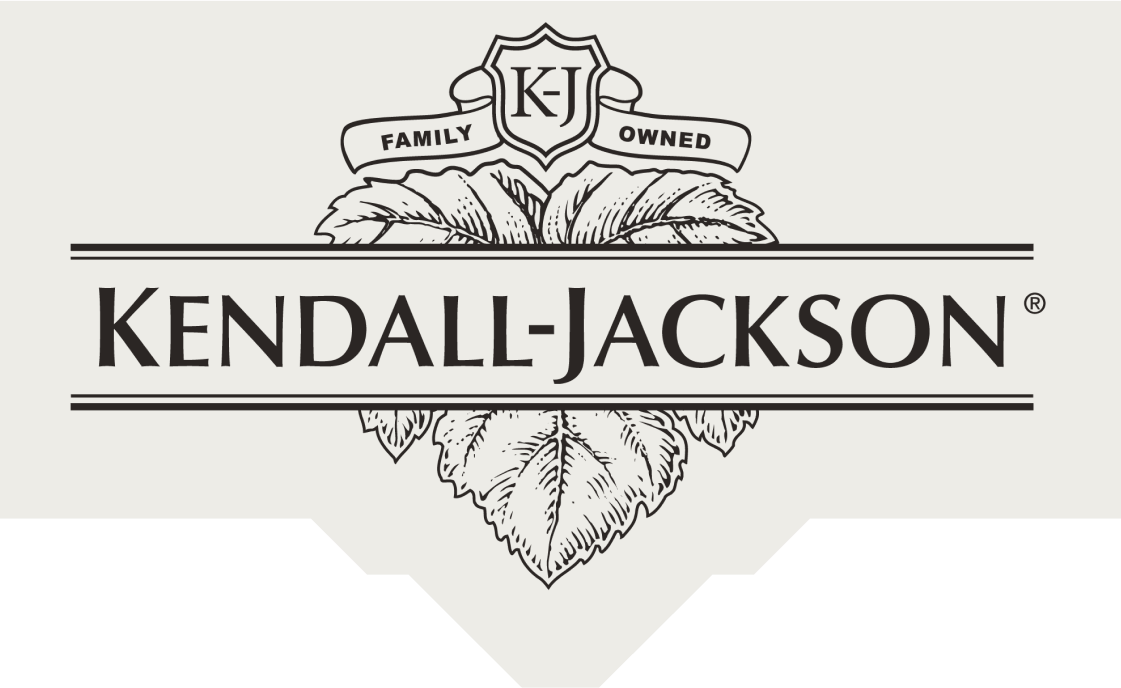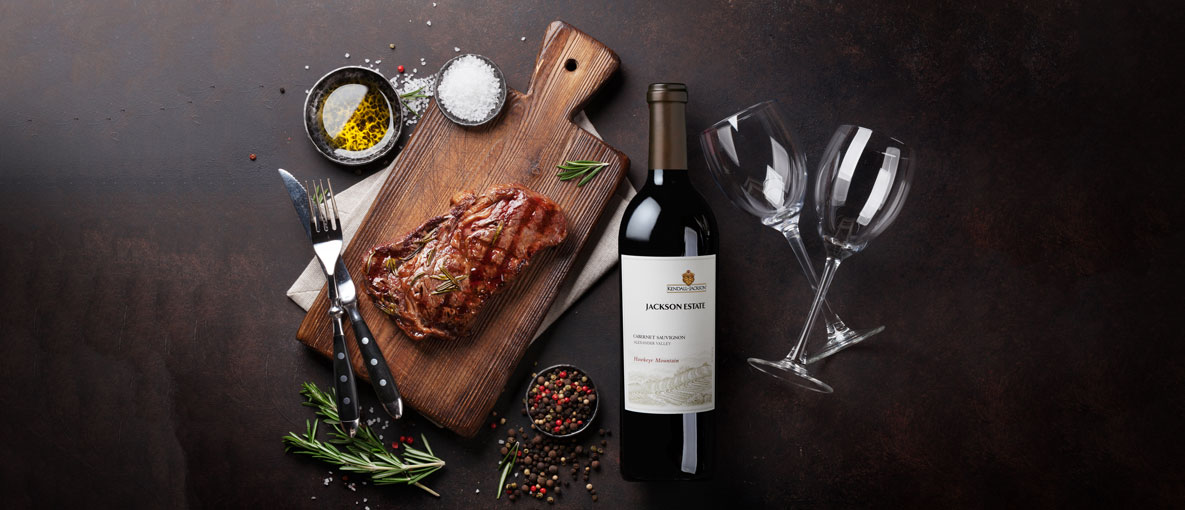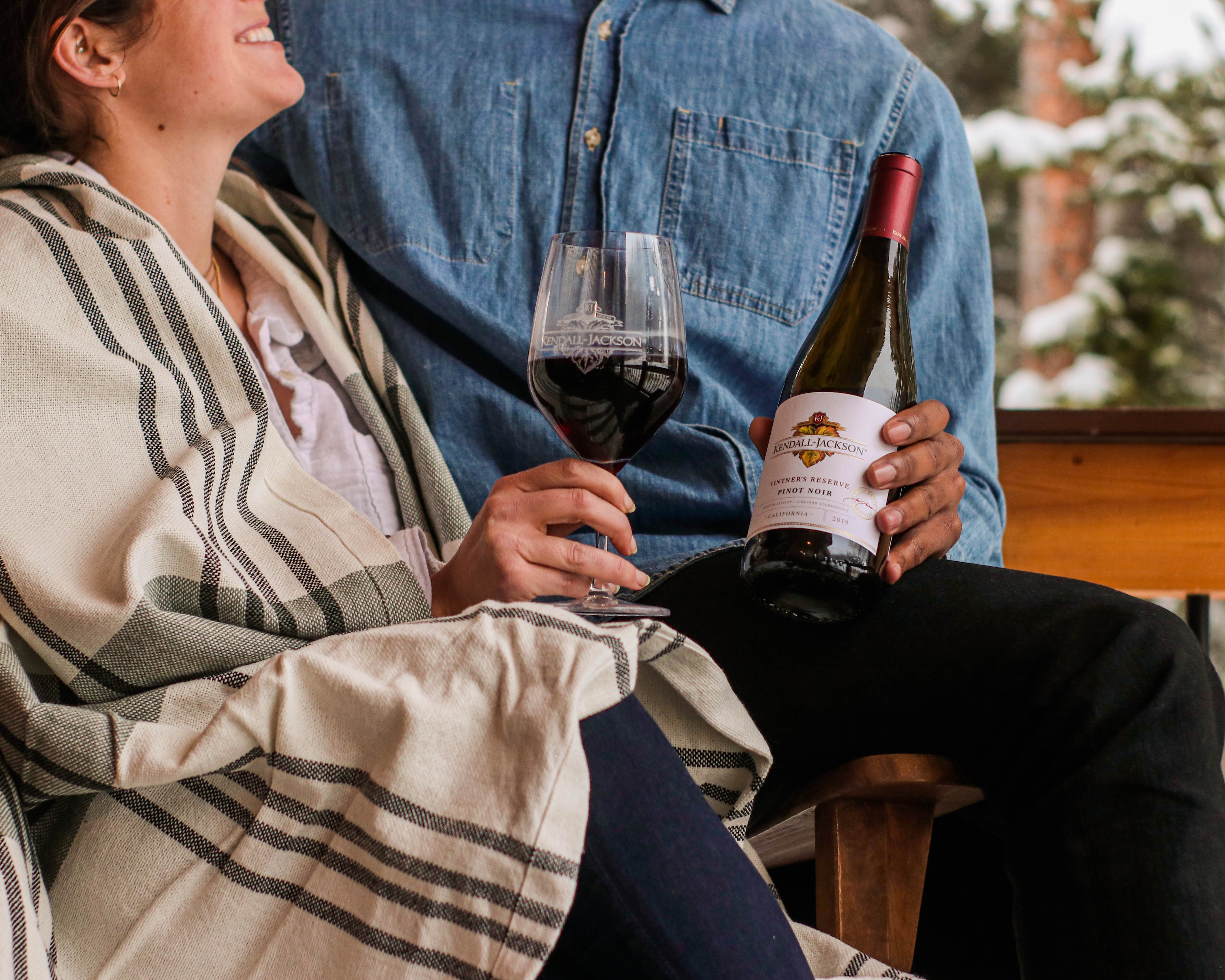What are the Differences Between West Coast Chardonnays?
Four thousand eight-hundred and forty miles. That's the western US coastline. What are the differences between West Coast Chardonnays? There are a lot!
But, we can narrow the playing field. The Kendall-Jackson family of coastal Chardonnay wines (and all of the K-J Chardonnays are dominated by coastal fruit) runs only from California through Oregon. That's also the case for 99.99% of US wines, whether they are Chardonnay or not. Washington State may be the country's second largest wine-producing state, but almost all of its wine is produced well away from the coast, toward the state's southeastern corner.
Given that we're still considering a vast border along the Pacific Ocean, there are no givens in what the USA's West Coast "terroir" contributes to a Chardonnay. What is a constant throughout West Coast Chardonnay wine growing country is the Pacific Ocean. It is the world's largest ocean. Technically, the Pacific is also the world's second warmest ocean. However, the West Coast gets the brunt of the cold waters, which descend from the Gulf of Alaska before moving east into waters where tiki drinks are ordered more than glasses of Chardonnay.
How do the Pacific's cold waters influence the vines and then the wines? Vineyards close to the coast are more and more prized as climate change factors into vine growing. Cooler temperatures mean that vines don't "sweat" as much. It's a relevant human reference because vines like to be comfortable. When vines suffer too much heat or drought stress, they tend to underperform - just as we do. The chill of the Pacific works to keep grape vines at ease at night with cooler temperatures and in the morning with a blanket of fog that shades the vines from bright morning sunlight.
Learn more: What is Chardonnay and why is it so popular?
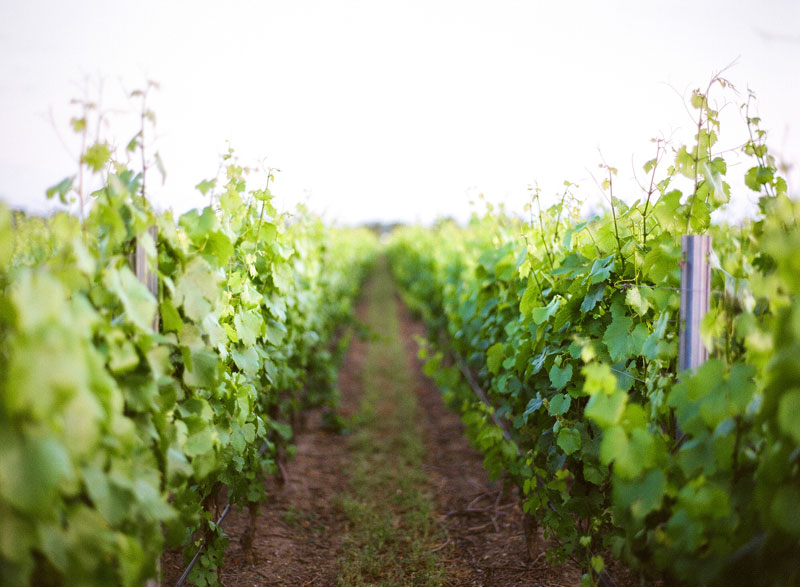
A GLOBAL KINSHIP OF THE BEST CHARDONNAYS
Chardonnay is a flexible grape. It will grow almost anywhere. However, the best Chardonnays need special conditions to fully thrive. West Coast Chardonnays share similarities with other top Chardonnay wine growing regions around the world. These include:
- France (the birthplace of Chardonnay)
- Burgundy
- Chablis
- Champagne
- Australia
- New Zealand
- South Africa
- Other ocassionally exceptional places around the globe
Chardonnay has long been planted around the world for its versatility in the vineyard as well as its winemaking styles. Cool? Warm? Wet? Drought? Chardonnay's got it! Mind you, it has its limits. It will produce wine in warmer West Coast climates like Paso Robles, but it will protest the high heat by making flat, joyless wines. Inland areas like Lodi tend not to be planted with Chardonnay either. The intensity of the heat there will crush Chardonnay's will for freshness and refreshment.
CHARDONNAY THE WONDER GRAPE
How is Chardonnay capable of such exquisitely precise differences based on its origin? At its most fundamental, Chardonnay is a neutral grape. This means that climate has a significant influence, especially on the chilly, fog-influenced West Coast of the USA.
The Chardonnay winemaker also significantly can influence the taste of Chardonnay. This is based on many choices. They start with the plant material. Which type of Chardonnay to plant? It's a bit like selecting different types of apples. They're all the same family, but different apples have different flavors. Winemakers also chose whether to vinify Chardonnay in stainless steel tanks for a fresh, crisp, fruit-driven Chardonnay taste or to make and age it in a barrel to give it more texture, weight and flavors that are oak-derived. Those flavors include toast, vanilla and fireplace smoke.
So, what does Chardonnay taste like? It's a most delightfully perplexing combination of origin and winemaker talent. Here is an overview of Chardonnay taste profiles from the K-J Chardonnay family.
Kendall-Jackson Vintner’s Reserve Chardonnay, California
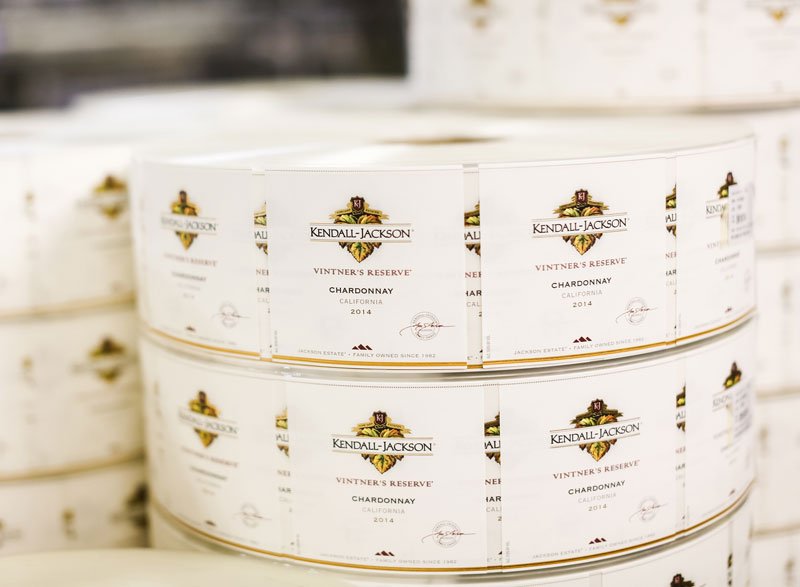
- Profile: The most Californian of all Chardonnays, this is the crux of West Coast Chardonnay taste. The K-J Vintner's Reserve is America's favorite Chardonnay for decades running. The reason is that Kendall-Jackson owns most of its vineyards or directs its viticulture – thus, controlling the resulting flavors in the wine. The vineyards aren't just coastal, they’re also planted at varying elevations.
- I'll leave it to the Winemaster of all K-J wines, Randy Ullom, to describe this wine in smell and taste:
"The purity and expression of the fruit comes from the sites. With Chardonnay, there’s a bell curve of flavors, from the ripe apple of the Russian River Valley, to the pear aromas of Carneros. Down in Monterey it’s lemon and lime, and in Santa Barbara there’s a lot of tropical, pineapple-like fruit."
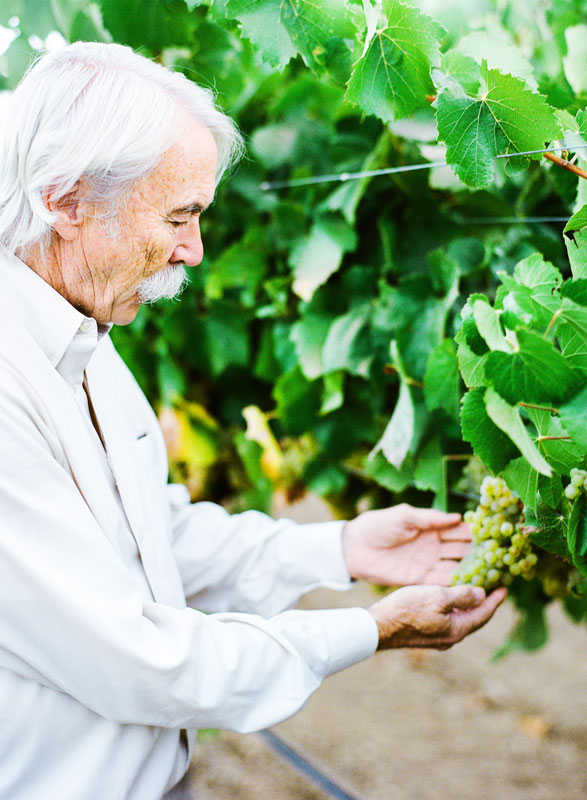
- The collective perspective of this Chardonnay palate is that it feels round and creamy yet not at all heavy. Especially when a new vintage of Vintner's Reserve hits the shelves, there's nothing like its cracking freshness!
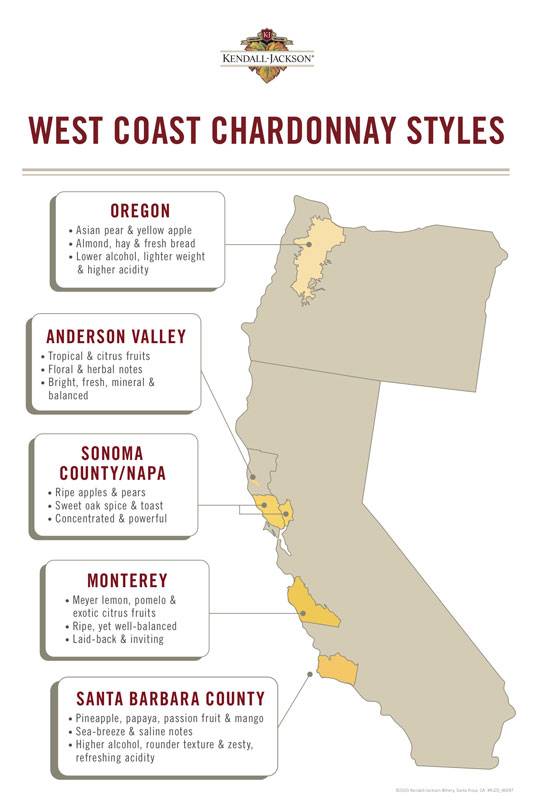
-
Sonoma County/Napa Chardonnay
- Profile: This is prestigious California Chardonnay country, and it tastes like it, too.
- There's unctuous, perfectly ripe autumn apples and pears to start, and that's all followed by a noticeable impression of sweet oak spice and toast on the palate. These are the most concentrated and powerful West Coast Chardonnays.
- The finishing taste from these two regions - often found in the expression of their shared Carneros AVA - is their length: they have a sensuality of flavor and a lasting taste impression.
-
Monterey Chardonnay
- Profile: Monterey Chardonnay seems to speak of its laid-back, beach-driven atmosphere. Its flavors and palate feel are inviting, and its price point tends to be easy-going.
- There's a zest for life in the fruit flavors here: Meyer lemon, pomelo and other exotic citrus fruits clench the palate in a delightfully tongue-tangling focus.
- Monterey Chardonnay offers a well-balanced glass of wine. There's the heft of ripe Chardonnay without necessarily the buttery dimensions usually found in regions with bigger status, more new oak barrels and higher price tags.
-
Santa Barbara County Chardonnay
- Profile: Santa Barbara Chardonnay has palate feel in spades. It's mouthcoating and a touch unctuousness without ever feeling too weighty.
- Exotic fruit flavors play with fervor here. Pineapple, papaya, passion fruit and mango do tangos! Sea-breeze and saline notes mingle here, too.
- Santa Barbara County Chardonnay can be a bit higher in alcohol and rounder in texture, but its scintillatingly zesty, refreshing acidity tends to keep the glasses easily refilled. It's a sippable, if broader shouldered, Chardonnay.
-
Anderson Valley Chardonnay
- Profile: Anderson Valley Chardonnay seems to capture the sumptuous flavors of regions further south while perking up the palate a few octaves higher.
- The cool climate provided by high altitudes and swift ocean-blown breezes makes these wines show a delightfully mind-bending split between tropical and citrus fruits. Floral and herbal tones are often noticeable, too.
- It's not just the palate feel of sheer fruit freshness that makes Anderson Valley Chardonnay bright. There is also a clear impression of rocky minerality that gives these Chardonnays plentiful palate verve and superb balance.
-
Oregon Chardonnay
- Profile: Oregon Chardonnay is low gear compared to California Chardonnay. For Chardonnay food pairings, this is where you go for more delicate dishes or flavors that are more minerally and earthy.
- Asian pear and sweet yellow apple flavors are accompanied by fewer baking spice influences of oak (than are California wines) here. Instead, aromas of almond, hay and fresh bread take precedence.
- Oregon Chardonnay alcohols tend to be lower than California Chardonnay alcohols. Their typically lighter weight and higher acidity means that the wines are more malleable in food pairings with Chardonnay.
Gloriously, for any Chardonnay style that you prefer, there are many West Coast Chardonnay options. Chardonnay pairings for food are almost endless for America's favorite grape!
Christy Canterbury is a Master of Wine, journalist, speaker and judge based in New York City. In 2014, she was short-listed for the Roederer Online Wine Communicator of the Year Award. Her work has been published in Decanter, Wine Enthusiast, Edible Green Mountains, Wine Searcher, Food Arts, Snooth, Beverage Media, TimAtkin.com, Civiltà del Bere, Wine Business Monthly, TASTED, Selectus Wines and in other outlets.
